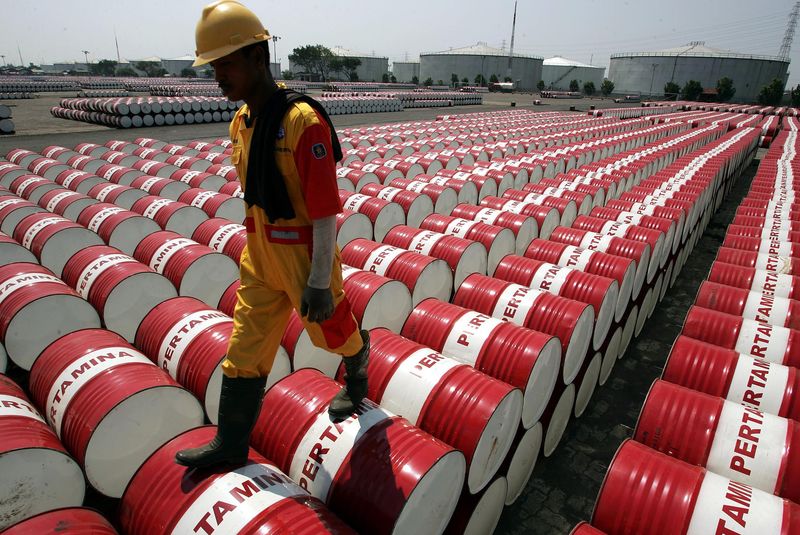Investing.com - US stockpiles of gasoline jumped almost 6.5 million barrels last week, the biggest build in nearly two years, a government report showed on Wednesday, as refiners optimized processing of oil to capitalize on still-good profit margins despite waning seasonal demand for fuels.
Inventories of crude oil, meanwhile, fell by just a third during the week ended Sept 29 -- amid the first rise in two months in volumes at the Cushing, Oklahoma hub that serves as a central delivery and storage point for U.S. crude, according to the Weekly Petroleum Status Report of the U.S. Energy Information Administration, or EIA.
Crude inventories overall fell by 2.224M barrels last week, registering a third straight week of draws that kept up with the prior week’s drop of 2.17M. Analysts tracked by Investing.com, on the other hand, did not really expect a change in overall crude inventories last week, forecasting a negligible build of 0.05M.
Despite the draw reported for the headline crude number by the EIA, crude volumes at Cushing rose last week for the first time in eight weeks, showing a modest gain of 0.132M versus the previous week’s slide of 0.943M.
The build at Cushing is significant for several reasons. For weeks now, traders had been fearful that Cushing inventories would fall to critically low levels that would complicate operations at the storage hub. The hub had seen enormous outflows of crude this year versus inflows, partly because of the pickup in export demand for a heavier type of US crude called West Texas Intermediate Midland, which people in the trade say is somewhat comparable to the viscosity of Saudi and Russian oils.
Shipments of US crude reached record highs of more than 5 million barrels per day in recent weeks, boosted by demand for the so-called WTI Midland which made inroads into markets underserved by production cuts in Saudi and Russian crude. Last week, for instance, US crude exports were at 4.96M barrels, up from the prior week’s 4.012M.
The build in Cushing despite such high demand for US crude proved there were finally more inflows at the hub than outflows despite the number of actively-deployed domestic oil drilling rigs falling almost non-stop since the start of this year. Despite the drop in oil rigs, the EIA continued to project a daily production of 12.9M barrels for US crude last week.
But more than the overall US crude draw and the build at Cushing, the staggering number in the latest weekly EIA inventory report was the build for gasoline stockpiles, which went up by 6.481M barrels last week, adding to the prior week’s growth of 1.027M. It was the single largest weekly build in gasoline since January 2022. Analysts tracked by Investing.com had anticipated a drop of 0.3M barrels instead last week for gasoline, America’s foremost fuel product..
While gasoline inventories rose, stockpiles of distillate — a feedstock for diesel and heating fuel — fell by 1.269M barrels last week, after a build of 0.398M in the week prior. Analysts tracked by Investing.com had forecast a 0.068M drop for last week.
The changes in gasoline and distillate inventories came amid healthy refining profit margins, known as “cracks”, seen for both now, particularly in distillates.
Typically at this time of year, demand for fuels is softer in the United States as fewer families do trip roads with children back in school or college. Yet, refiners seem to be cranking out as much gasoline and diesel as they could, incentivized by the cracks. The EIA said last week's total refined oil product supply to the marketplace -- an indicator of demand -- fell to 8.014M for gasoline versus the prior week's 8.619M.
The EIA said refiners actually turned out less gasoline and other fuel products last week compared with the week prior. Still, they seem to be processing more oil than necessary at this time of the year, prompted by the cracks.
“To give an idea of what cracks are worth now, the one for New York ULSD which is representative of diesel, is at around $45 a barrel prompt,” said John Kilduff, partner at New York energy hedge fund Again Capital. “Just over a decade ago, we used to have cracks in the single digits and sometimes even in the negative.”
